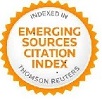Between the laudatio and the prayer: the adlocutio sponsalis in Neolatin epithalamia
Keywords:
Neolatin Poetry, Epithalamium, Rhetoric, Christian prayerAbstract
The poetic tradition has established the so-called adlocutio sponsalisat the end of the epithalamia as a common topic. Here the poet, or a divinity (frequentlythe goddess Venus), adresses the couple to incite them to sexual union and to wish them everlasting love, harmony, happiness, prosperity and descendants. The epideictic rhetoric for the nuptial subject already prescribed the orator to wish these desiderata, especially gathered in a prayer to the gods. In the Latin epithalamia of the 15th-16th centuries we can see some variations of the adlocutio─sometimes shaped as a Christian prayer─that emphasize the laudatory features inherited from Antiquity
Downloads
References
ARNALDI, F.; GUALDO, L.; MONTI,L.(eds.)(1964),Poeti Latini del Quattrocento,Milán –Nápoles: Ricciardo Ricciardi Editore.
BELLANDI, F. (2004),“Epicuro, Seneca e il matrimonio del sapiens: sul frammento 23 voterro = 45 Haase del De matrimoniodi Seneca”, Materiali e discussioni per l’analisi dei testi classici 53: 175-182.
BRAZANO, S. di (2005),Pietro Bonomo (1458-1546). Diplomatico, umanista e vescovo di Trieste. La vitae l’opera letteraria, Trieste: Edizioni Parnaso.
BRIOSO, M. (1986), Bucólicos griegos, Madrid, Akal/Clásica.
CAIRNS, F. (1973), Generic composition in Greek and Roman Poetry, Edimburgo: University Press (Ann Arbor: Michigan Classical Press, 2007).
CASSANOVA–ROBIN, H. (2008), “Rustica voluptas: produits agrestes et sensualité dans la primière éclogue de Pontano”, P. Galland-Hallyn, C. Lévy, W. Verbaal (eds.), Le plaisir dans l’Antiquité et à la Renaissance. Études réunies, Turnhout: Brépols, 187-212.
CHARLET,J.L.(1983),“L’épithalame de G. Altilio pour les noces de Jean Galéaz Sforza et Isabelle d’Aragon, dans ses rapports avec la tradition et la culture classiques”, Res Publica Litterarum. Studies in the Classical Tradition 6:91-112.
CHARLET-MESDJIAN,B.(2009),“Les discours sur le mariage de Janus Pannonius dans le livre II de ses Elégies”, D. Sacré, J. Papy (eds.), Syntagmatia. Essays on Neo-Latin Literature in honour of Monique Mund-Dopchie and Gilbert Tournoy, Leuven: University Press, 61-71.
CWIKLINSKI,L.(ed.)(1930),Clementis Ianicki, poetae laureati carmina, Cracovia: Polonica Accademia Litterarum.
D’ELIA, A. (2002), “Marriage, Sexual Pleasure, and Learned Brides in the Wedding Orations of Fifteenth-Century Italy”, Renaissance Quarterly 55:379-433.
_____(2004), The Renaissance of Marriage in Fifteenth-Century Italy, Cambridge-London: Harvard University Press.
FAYE WILSON, E.(1948),“Pastoral and Epithalamium in Latin Literature”, Speculum23.1:34-57.
GAISSER, J. H.(1993),Catullus and his Renaissance Readers,Oxford: Clarendon Press.
GARCÍA GARCÍA, M., GUTIÉRREZ CALDERÓN, J. (eds.) (1996), Menandro el Rétor. Dos tratados de retórica epidíctica, Madrid: Gredos.
GAUDEMENT, J.(1993),“Un débat de société à propos du mariage au Concile de Trente. Pacte de famille ou choix d’un conjoint”, M. T. Jones-Davies (ed.), Le mariage au temps de la Renaissance, París: Klincksieck, pp. 101-113.
GINESTE,M.-F.(2009),“L’adlocutio sponsalis dans quelques épithalames de l’Antiquité tardive, ou l’instrumentalisation du discours divin”, G. Abbamonte, L. Miletti, L. Spina (eds.), Discorsi alla prova. Atti del Quinto Colloquio italo-francese. Discorsi pronunciati, discorsi ascoltati: contesti di eloquenza tra Grecia, Roma ed Europa, Napoli –S. Mª. di Castellabate, 21-23 sept. 2006, Napolés: Gianinni ed., pp. 483-502.
GÓMEZ SANTACRUZ, J. (2008), “Iconografía de la arenga militar (“adlocutio”) en Roma”, J. C. Iglesias Zoido (ed.), Retórica e historiografía: el discurso militar en la historiografía desde la Antigüedad hasta el Renacimiento, Madrid: Ediciones Clásicas, pp. 367-404.
GRUBBS,J.E.(1995),Law and Family in Late Antiquity. The Emperor Constantine’s Marriage Legislation, Oxford: University Press.
LAMATTINA,G.(ed.)(1978),Gabriele Altilio. Poesie, Salerno: Arti grafiche dell’ Istituto maschile Umberto.
MONTERO CARTELLE, E.(1991),El latín erótico. Aspectos léxicos y literarios, Sevilla: Publicaciones de la Universidad de Sevilla.
MORELLI, C. (1910), “L’epitalamio nella tarda poesia latina”, Studi Italiani di Filologia Classica18, 319-432.
MULAS, P. L. (1995), “L’Épithalamium Carmendi Paolo Bernardino Lanterio.Osservazioni intorno all’iconografia dei duchi di Milano nei manoscritti miniati, Viglevanum, 5, 8-18.
NESPOULOS, P. (1973). “Giovanni Pontano, poéte de l’amour conjugal”, J. Ijsewijn-E. Kebler (eds.), Acta Conventus Neo-Latino Lovaniensis, Lovaina: University Press -Munich: Wilhelm Fink, pp. 437-443.
NICHILO,M.de(1994), Oratio nuptialis. Per una storia dell’oratoria nuziale umanistica, Bari, Dipartimento di Italianistica dell’ Università di Bari.
_____(1995), “L’oratoria nuziale umanistica tra retorica del matrimonio ed elogio cortigiano”, Euphrosyne23, 123-139.
_____(2000),Retorica e magnificenza nella Napoli Aragonese,Bari: Palomar.
PERNOT, L. (1993), La rhétorique de l'éloge dans le monde gréco-romain, 2 vols., París: Institut d ́études augustiennes.
RAMELLI,I.(2000),“La tematica de matrimonio nello Stoicismo romano: alcune osservazioni”, Ilu. Revista de Ciencias de las Religiones5, 145-162.
RUSSELL, D. A. (1979), “Rhetors at the wedding”, Proceeding of the Cambridge Philogical Society25, 104-117.
SCARPARO, L. (2007), “Influence de Stace sur la poésie napolitaine du Quattrocento”, Camenae1, 1-15.
SERRANO CUETO,A.(2008),“Elepitalamiolatino (1560) deDiego de Guevaraen honor de Felipe II e Isabel de Valois”,Calamus Renascens 9:245-292.
────(2009),“El Epithalamium de Jerónimo Ramírez en honor de la boda (1570) de Felipe II y Ana de Austria”,Humanistica Lovaniensia 58:103-129.
────(2011),“Las lágrimas de la nouanuptaen la tradición del epitalamio latino”, Minerva, 24:137-155.
TELEKI,S.(ed.)(1784),Iani Pannonii Poemata, Utrecht: Bartholomaeus Wild.
TOURNOY, G. (2003),“Pietro Bonomo e il primo epitalamio stampato neo Paesi Bassi”, Studi Umanistici Piceni23:191-207.
TUFTE, V. (1970). The Poetry of Marriage: The Epithalamium in Europe and its Development in England, Los Ángeles: Tinnon Brown.












